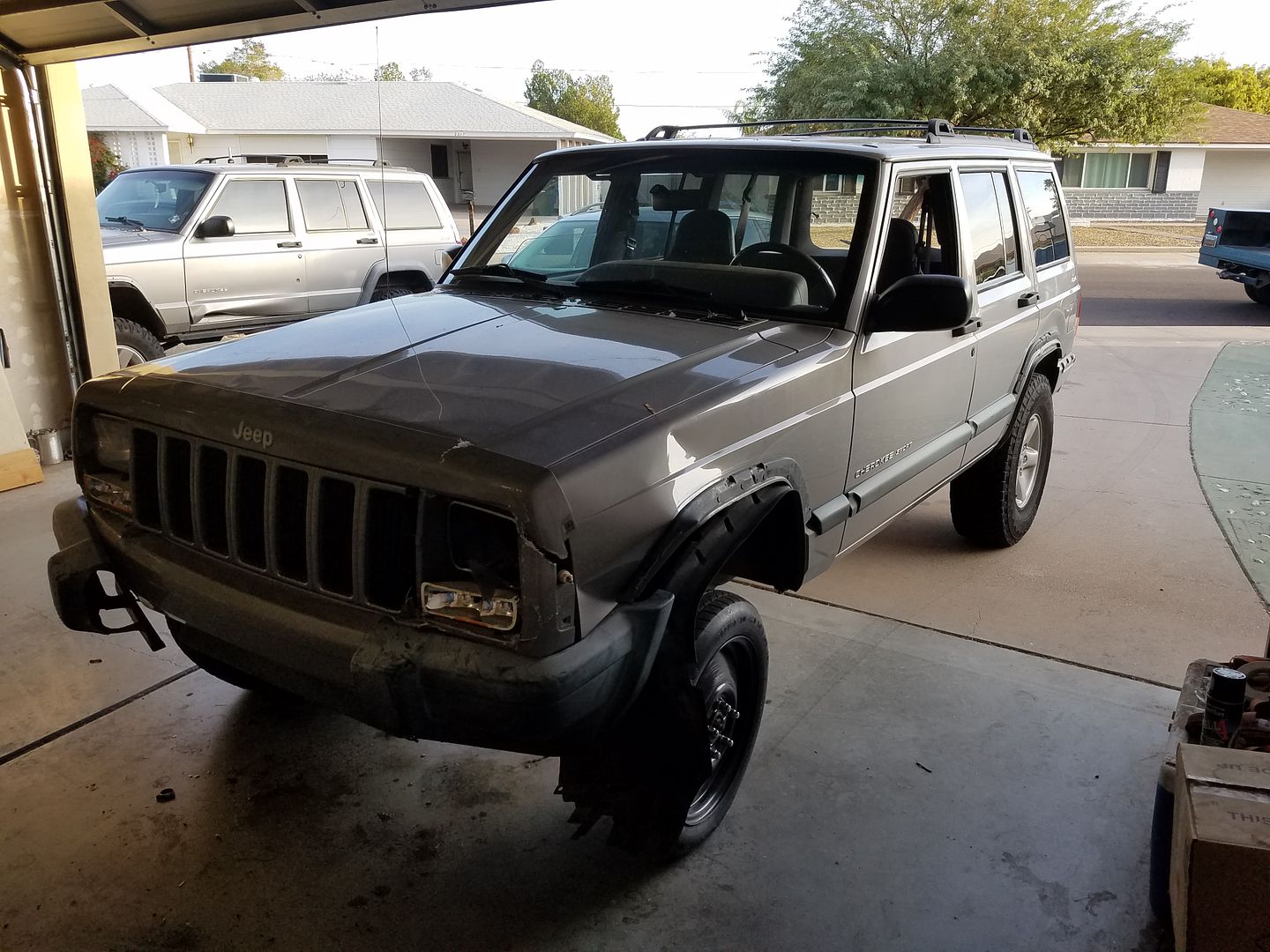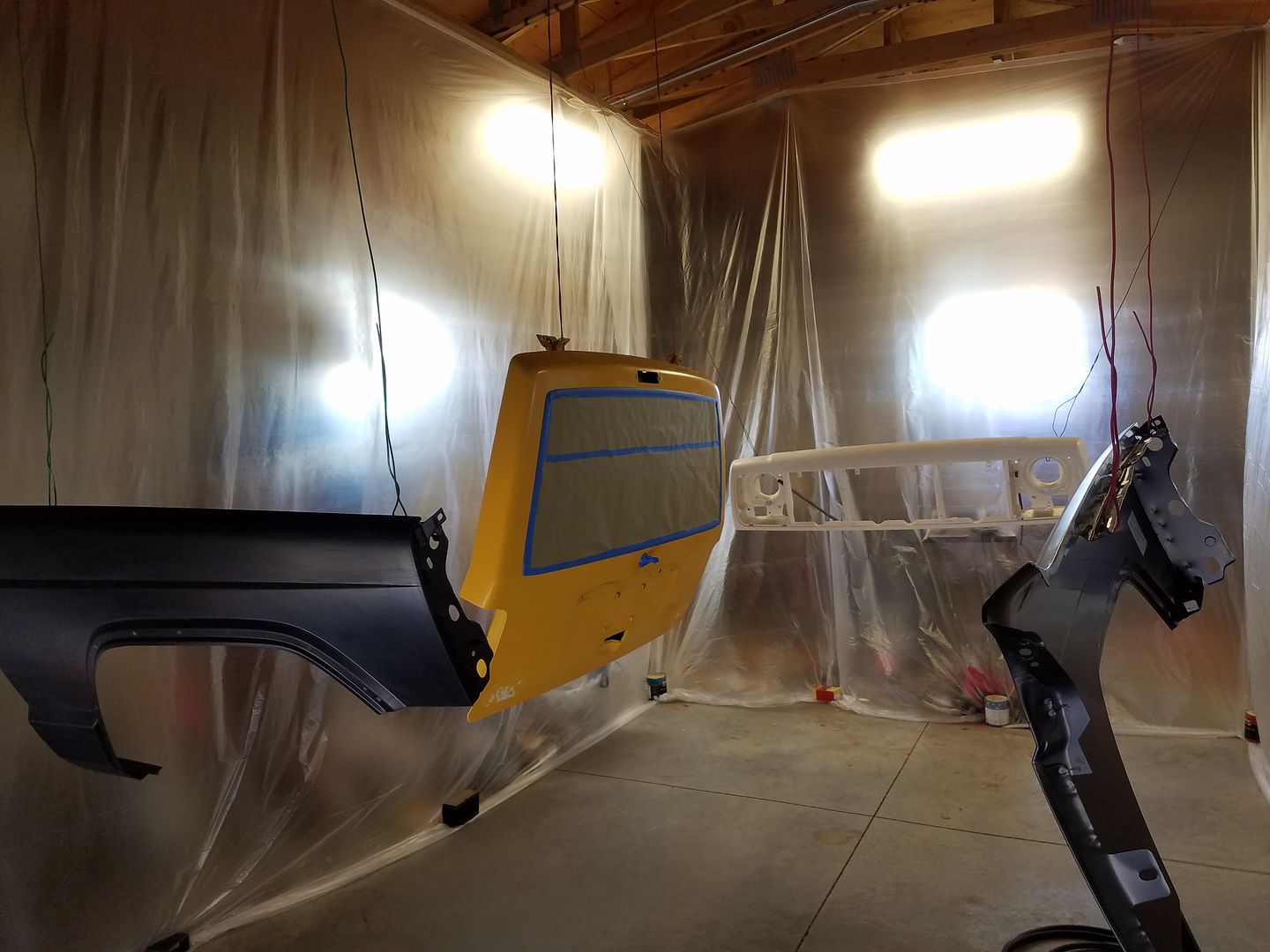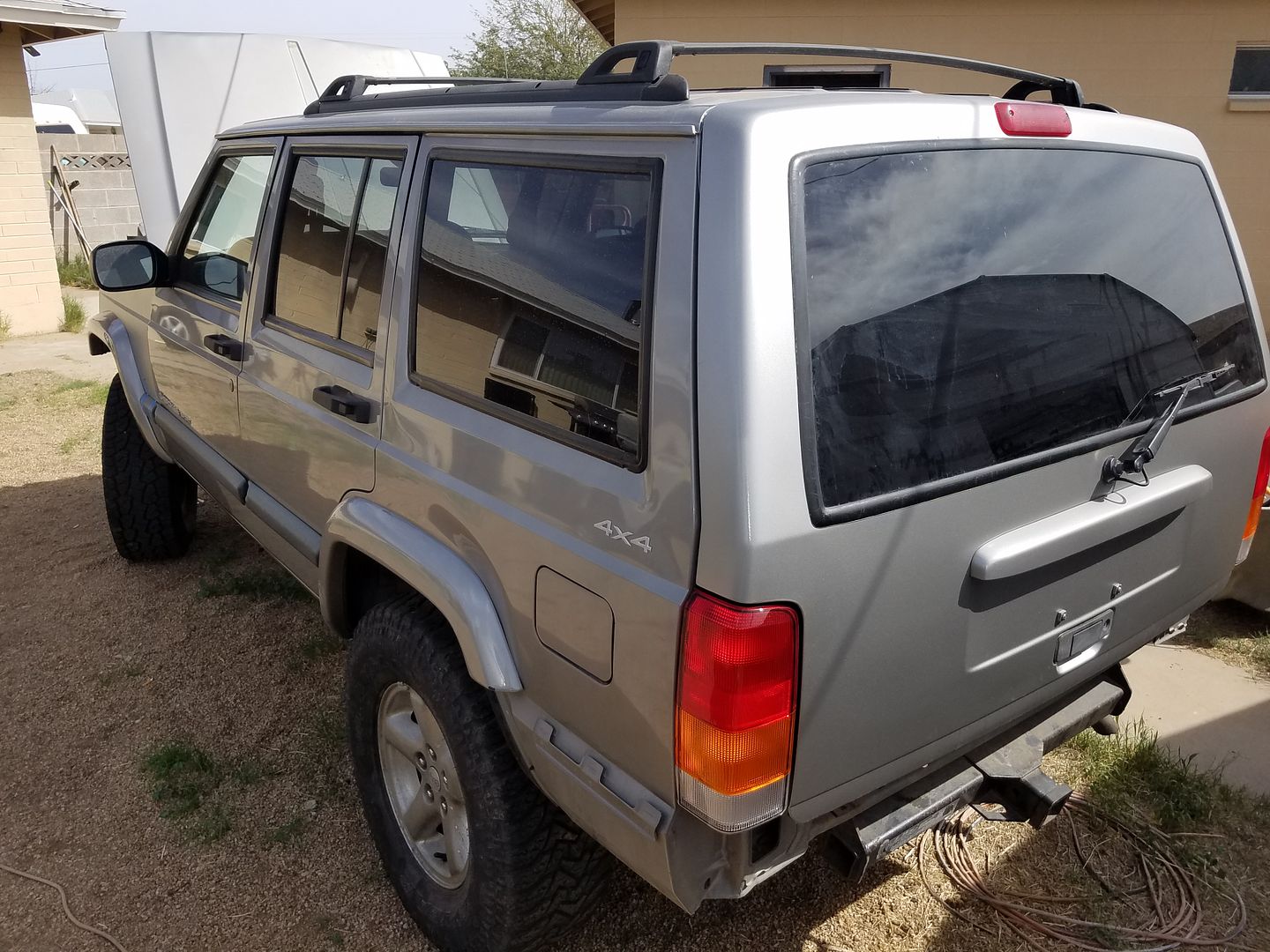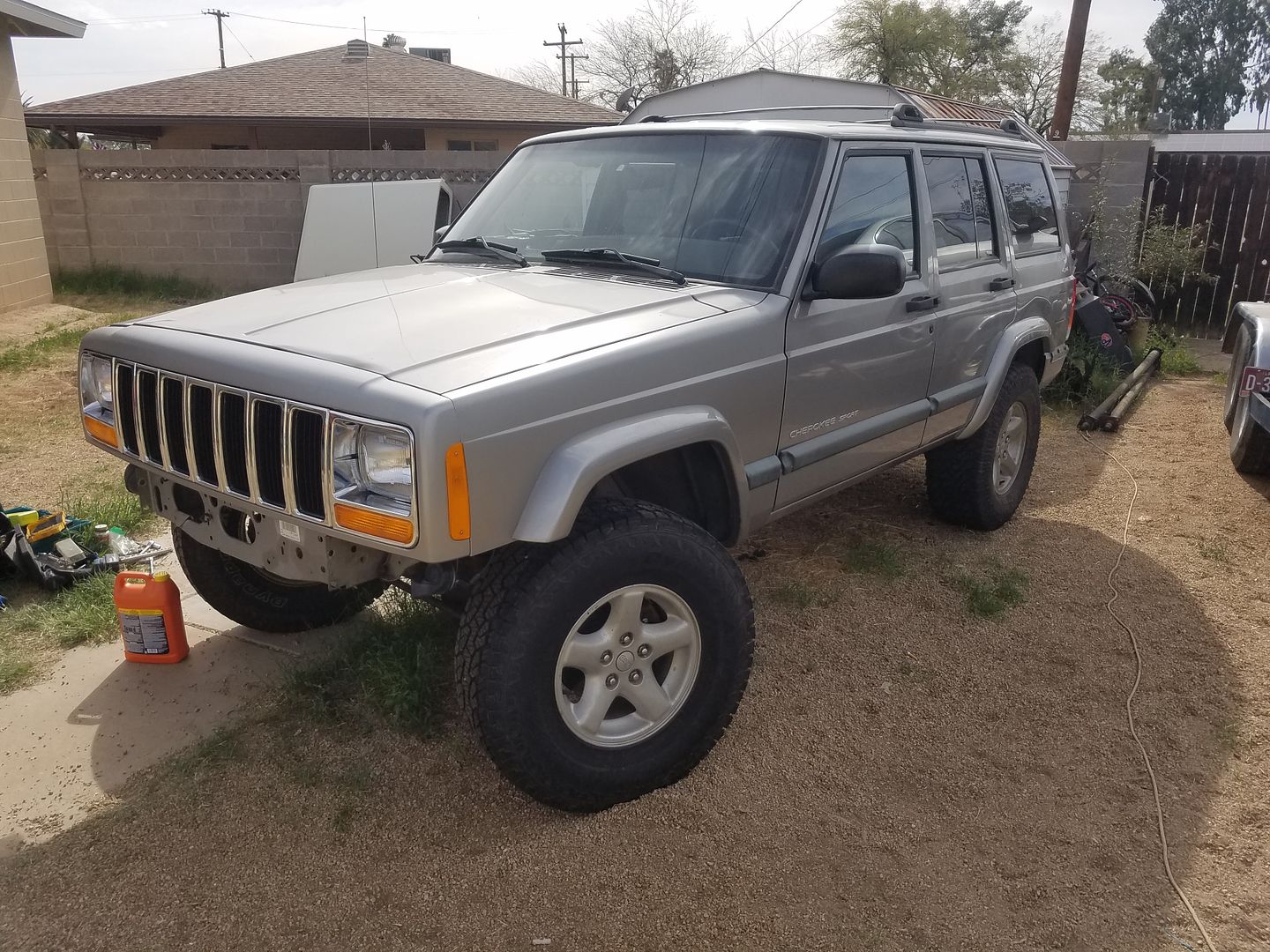I wouldn't tape them off, I would remove them. Granted, the bolt strip on the back will probably end up with a couple of them broken off but you can buy replacement strips from Quadratec:
https://www.quadratec.com/p/crown-automotive/fender-flare-retainer-kit-cherokee-xj-55003232K
The thing with painting them in place is that regardless of how careful you are with the tape, you are likely to end up glue-ing the flairs into the fender which will create a lot more work if you have to get more work done later (like a fender bender). This also allows you to paint them away from the Jeep to reduce the chances of overspray. With a part like this, your paint job doesn't have to be perfect, just close. The transition between the two panels creates a natural break making it difficult for the eyes to detect small inconsistencies in color. This would allow you to use a rattle can paint mix from a matcher like "AutomotiveTouchup".
https://www.automotivetouchup.com/
I have used these guys in the past and their match is pretty close. To illustrate, the clear coat had peeled off of the grill on my wife's Highlander and it looked like complete crap so I removed it, prepped it and painted/cleared it with supplies from these guys. I did use a proper spraygun but you could do a good job with their rattle can mix as well. Below is how it came out:


With respect to prep, you should be aiming for an 800grit finish before you spray the color. 600grit can work but I prefer 800 to 1000. For something like this, I would first sand the parts completely smooth to 600 grit (dry) and would then shoot a layer of high build primer like this stuff:
https://www.automotivetouchup.com/spray_paint_primer.aspx
Note, you don't have to remove all of the original paint but you will want to make sure that those existing spots are no longer visible.
This kind of primer creates a nice base and gives you a good surface to work with. Once dried, I would wet-sand the primer with 800 grit to create a good base for the color. What I look for with this sanding step is to get the panel to the point where I can see a reflection when I stand back from it and look at an angle. The reflection of the image won't be as clear and crisp as a finished panel but you should be able to see a reflected image and detect any obvious scratches that still need work.
At this point, I would shoot the color (3 coats) following the paint manufacturers instructions on flash time (time between coats). After the last flash, I would spray the clear coat they provided. You can get away with as few as 2 coats but I usually use 3 coats of clear as well.
Once this dries, you can reinstall the parts onto the car. Note that you really want to follow the instructions on flash time. Your primer coat will stick to the fender because it will grip onto the minute scratch marks left from your 600 grit prep (this is why you don't want it too smooth, like 2000 grit). Sanding the primer will create a similar surface for the color coat to bond to and 800 grit offers more than enough "grip". From this point on though, you are aiming for a chemical bond between the layers so the timing is really important. If for some reason you can't spray the clear coat within the recoat window for the color coat, you will have to wait until it is cured (a couple of days probably), and then wetsand the color coat so that the clear coat can gain a mechanical bond. A chemical bond is just as effective as a mechanical bond so it is easier to just plan ahead to make sure you have enough time to spray the paint and the color within the flash windows for each.
One last comment: If you decide on this path and continue with your research you will probably find references to a special prep layer for plastic parts. This stuff is designed to soften the plastic on things like soft bumpers to help create a chemical bond on your initial primer coat. I do NOT recommend this stuff for your application. First, those flairs are plastic but they are much stiffer than a flexible bumper and they don't need it. I tried to use some of this stuff on that Highlander project and it made a bloody mess. I ended up stripping it off and just following the standard painting instructions I outlined above. This stuff may help on a soft/thin bumper but I don't think you need it on something like this.
HTH
Todd











